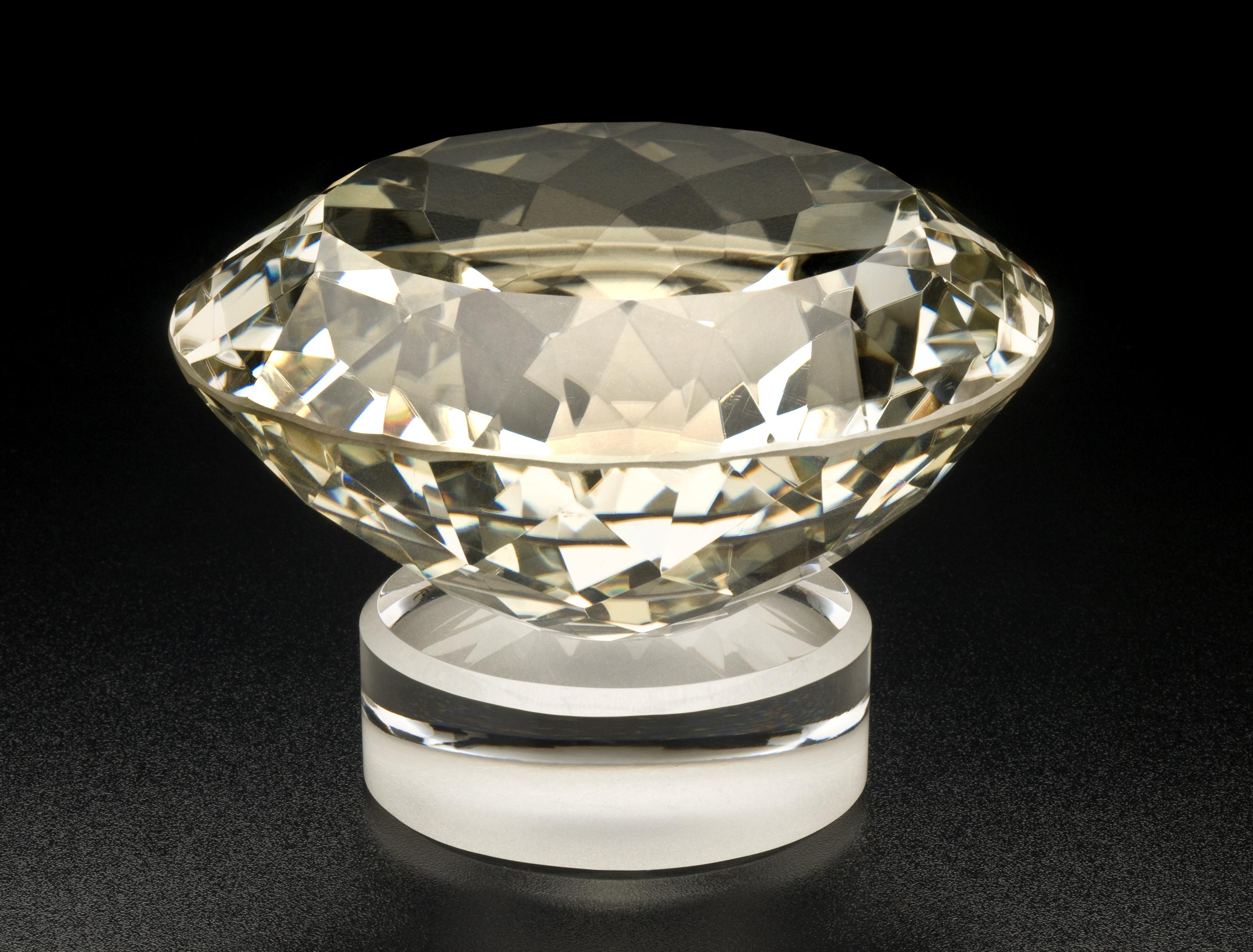
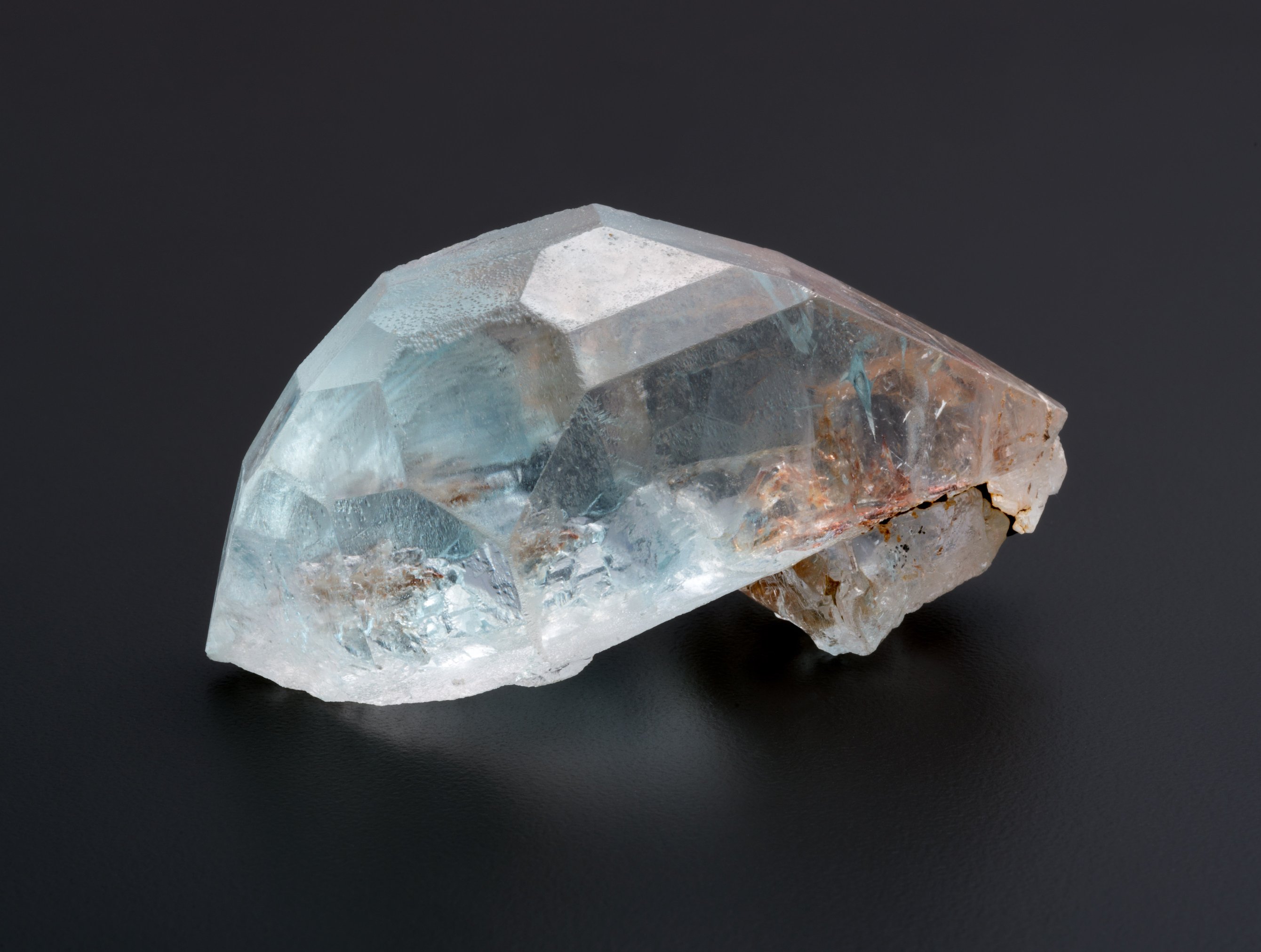
Topaz with irregularly variegated light blue and brown fragments of terminated crystals from Teller County, Colorado. (Photo/Rick Wicker)
How does topaz form?
Many of the gems we wear have fiery beginnings. From the depths of the planet, magma carves out giant chambers in the Earth’s crust. While some breach the surface and form explosive volcanoes, many of these magmatic blobs stay tucked underground and cool into granite. Any excess elements or liquids left over after the granite cools are shoved towards the edge of the magma chamber, where they organize themselves into large crystals that lock together like a jigsaw puzzle. Topaz can grow from those super-hot fluids in a type of rock geologists call a pegmatite.
Where can you find topaz?
There are countless rock formations that produce topaz the world over. From here in the United States to the farthest reaches of Russia to the rainforests of Brazil, anywhere that magma can bubble to the surface, you can find topaz! Some of the best topaz in the US comes from Colorado, Maine and Utah. Some of which have fabulous gemstones found in places like Topaz Mountain and Crystal Peak. Here at the Museum, we have some incredible stones found in our own backyard from pegmatites that surround Pike’s Peak.
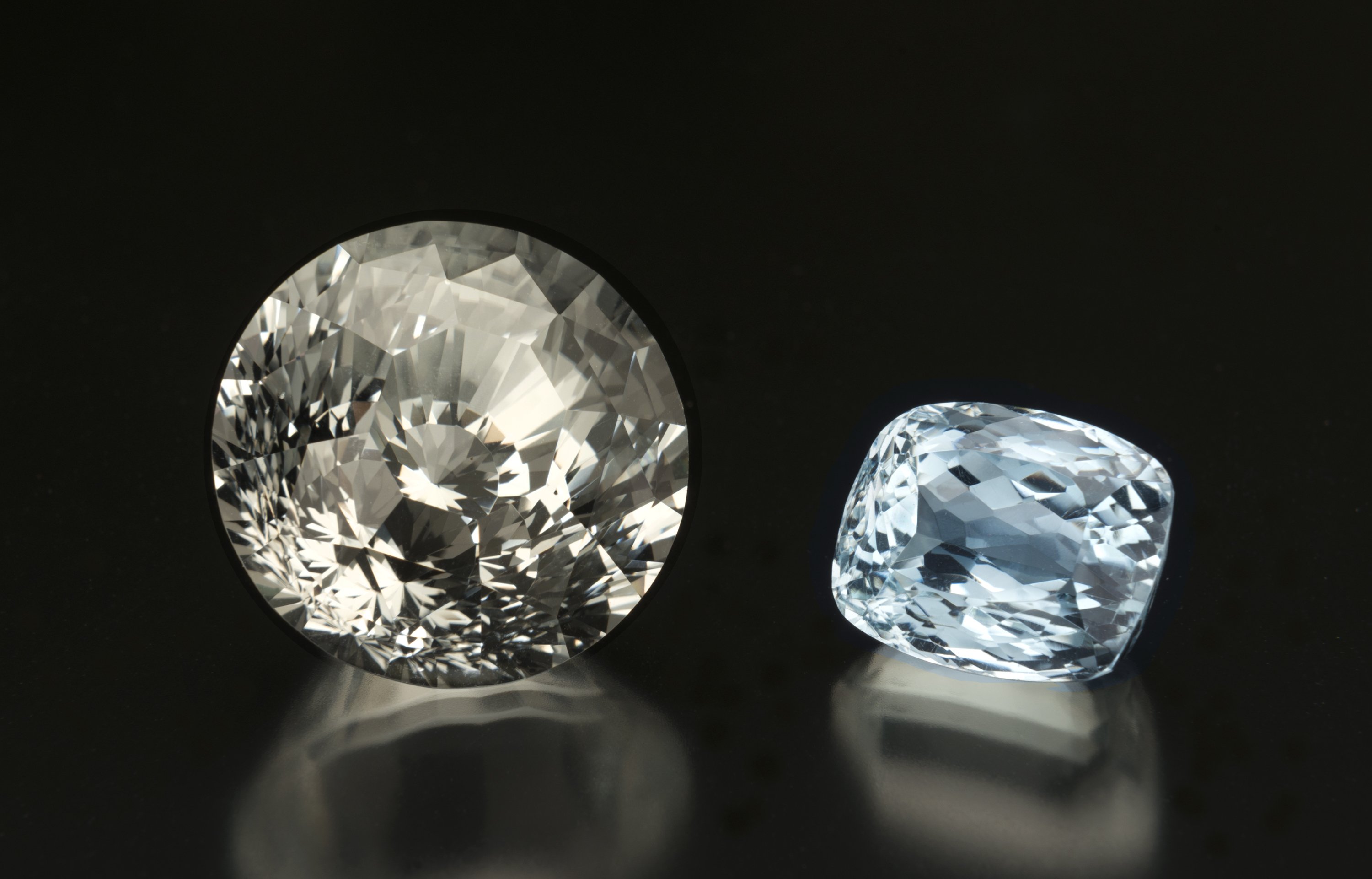
31.1 carat faceted topaz from Teller, Colorado. (Photo/Rick Wicker)
Why are some topaz different colors?
Topazes are typically colorless, but different colors form when you mess with the chemistry. For instance, a topaz can turn a light blue due to surrounding radiation. Deeper blues are usually the result of a bit of human interference. Hate to break your heart on this one, but your bright blue topaz necklace is likely due to added radiation! However, some other amazing colors like orange, amber, pinks and greens can happen naturally. Rare, but it can happen.
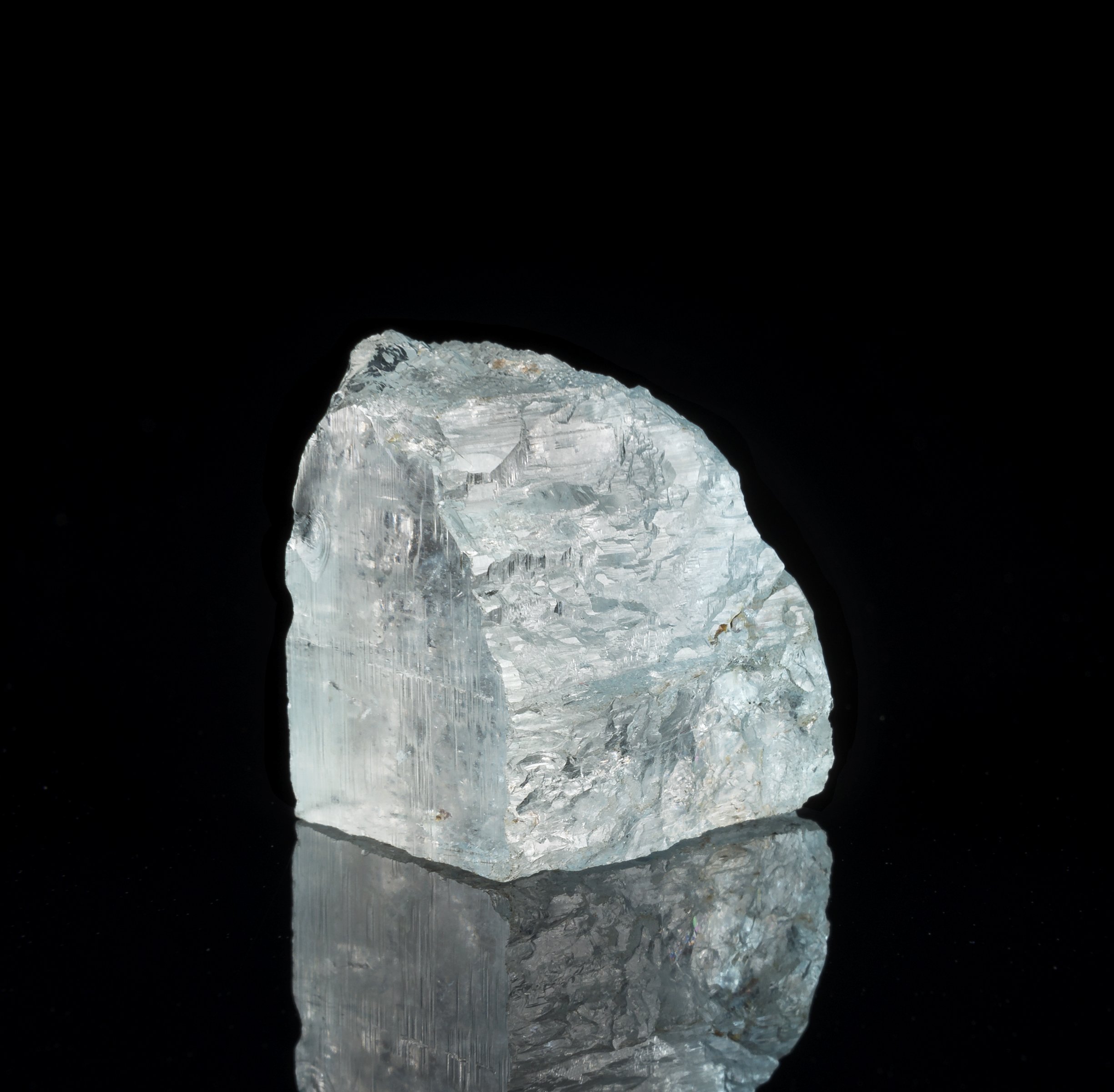
Topaz fragment with blue zonation from Teller, Colorado. (Photo/Rick Wicker)
Why do some topaz look carved?
Many natural topaz crystals are shaped like a chisel, a distinctive shape that helps scientists identify the stone. But something weird and wild happens in older pegmatites. Those perfect crystal faces start to get carried off piece by piece as the fluids in the rock basically eat the topaz. Nature carves away at the faces, leaving behind beautiful twisted formations and deep gouges in the gemstone. Scientists call this process etching or dissolution and it can make identifying a mineral really difficult!
How can I take care of my topaz jewelry?
Topaz is great for jewelry. Not only is it delightfully shiny, but it is also super durable. You can subject your topaz ring to some serious wear and tear without it getting all scratched up. There are even some stories about topaz crystals punching through metal boxes! But there is one thing that can ruin your nice gemstone: heat. If you heat up or cool down a topaz too quickly, parts of the crystal can expand and cause internal fractures. This can ruin the gem’s clarity, adding imperfections to the stone. The temperature change has to be pretty extreme to cause thermal shock, just don’t drop your ring into boiling water!

Salvador Dali’s 10,588ct topaz held inside Coors Gems and Minerals Hall. (Photo/Rick Wicker)
What is the coolest piece of topaz at the Denver Museum of Nature & Science?
We have a lot of amazing topaz here at the Museum, but nothing can compare to the Dali topaz on display in Coors Gems and Mineral Hall. Weighing in at a whopping 10,588ct (over 4 pounds), this Brazilian stone was once owned by the surrealist painter Salvador Dali. This massive topaz sports nearly 130 facets, creating a dazzling display of light. Far too big to wear, Dali housed his topaz in a custom gold chalice. Talk about bling! The Dali topaz has certainly earned its own special case in our gemstone exhibit since its donation in 1976.
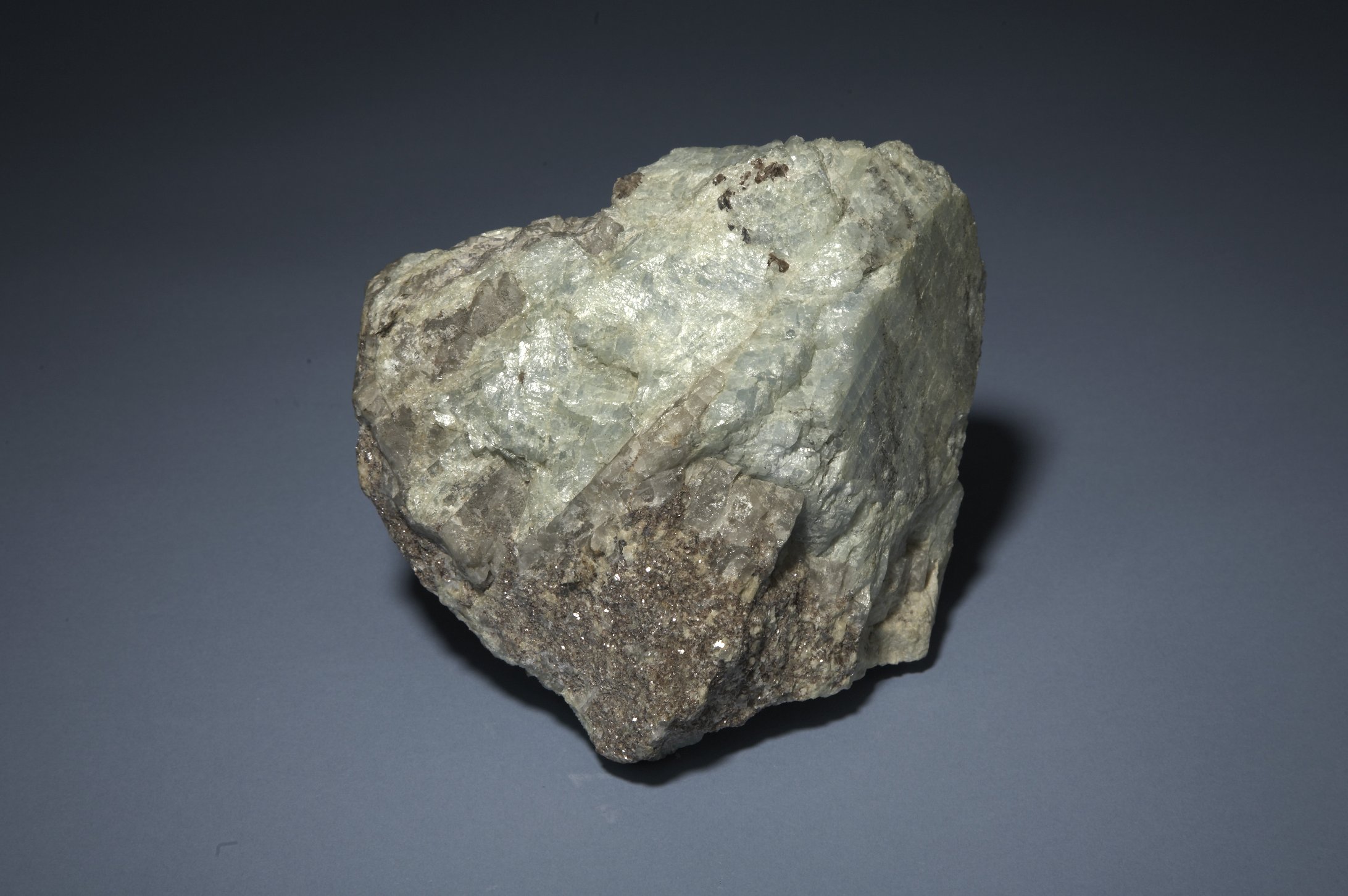
Topaz specimen with lepidolite excavated near Karibib, Namibia. (Photo/ Phil McCollum)
